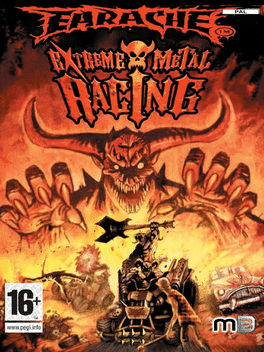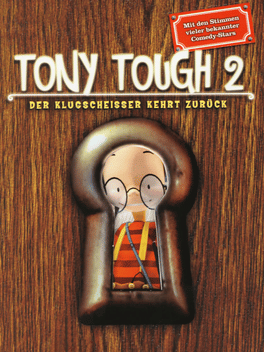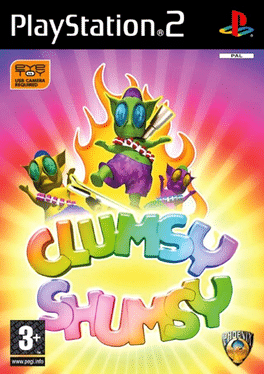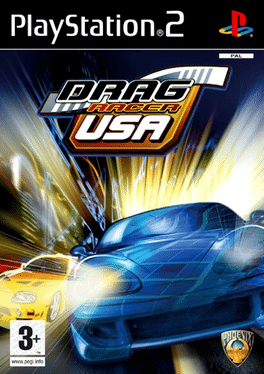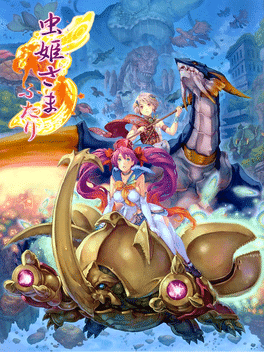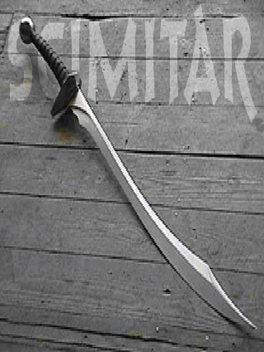New Games - Page 10221
-
Winning Eleven: Pro Evolution Soccer 2007
2006
The Xbox 360 port of Winning Eleven: Pro Evolution Soccer 2007, featuring next-gen graphics and improved physics, altering gameplay. -
Guild Wars: Nightfall - Collector's Edition
2006
Guild Wars Nightfall is the third campaign of Guild Wars It is set in the North-African-themed continent of Elona. In Guild Wars Nightfall, you will never face danger alone. Not only can you group with any of millions of players worldwide, but now, for the first time ever, you'll be able to band together with customizable Heroes that will not only fight by your side, but level up with your character and follow your orders as you fight to hold back the night. The Guild Wars Nightfall Collector's Edition box includes: - in-game Miniature Varesh - exclusive dance emotes for Derwish and Paragon characters - Nightfall Bonus Music Key, providing exclusive in-game music from Guild Wars composer Jeremy Soule - "Making of Guild Wars Nightfall" DVD - Artbook "The Art of Guild Wars: Nightfall" - Nightfall Soundtrack CD - Nightfall Skill Pins - foldout standee of Warmarshal Varesh - Elona Map Poster -
Lamento: Beyond the Void
2006
The game takes place in a fictional world inhabited by Ribika (who look like humans but have cat ears and tails). Their world has fallen into dark times -- a mysterious void has made some places (and even animals) impossible to touch, causing major food shortages. A strange and deadly disease that has killed off a large percentage of the female Ribika population is also spreading. The hero, Konoe, exists in this miserable world, living alone in the starving village of Karou who have turned to cannibalism. The story begins with Konoe in Karou, where he suddenly begins to see horrible dreams and strange marks appear on his body. This is believed to be a curse so Konoe heads off to Ransen (the big city) in order to heal his body... -
Ai Shimai: Docchi ni Suruno!!
2006
Six months have passed since Takaya moved to this town... One day, he accidentally strikes a living creature. It is "Ring" and he says he is a messenger of the God who protects this area. And Takaya is forced to go through a trial to take over the God. The trial is to get a girlfriend during a certain period. He doesn't want to be the God, and he ignores it and goes to school... -
Chanter: Kimi no Uta ga Todoitara
2006
Every encounter ends in a farewell; every farewell is the prelude to a journey. It’s the summer season. Mikiya, a third-year high school student, has been living a life free of both excitement and dissatisfaction. If one were to raise one incident, it would probably be his parents’ divorce. Outside of that, nothing of note. Youth might be the time when one craves change, but once getting accustomed to it, this lifestyle of his was pleasant enough. He spent his days aimlessly passing time. The first semester was about to end, with his future still undecided. Kousaka Chitose, his childhood friend who carries the strong blood of the barbarian tribes (according to Mikiya). Ayase Ibuki, the very picture of a student council president (according to Mikiya). Yoshizumi Kotoko, a club helper with God-bestowed athletic abilities in exchange for proper breasts (according to Mikiya). Surrounded by this lively group, the days passed by—sometimes filled with joy, sometimes filled with loneliness. Just before summer vac -
Earache: Extreme Metal Racing
2006
Use ten different vehicles to race and battle through different courses while listening to the games Death Metal soundtrack. -
Tony Tough 2: A Rake's Progress
2006
A prequel to Tony Tough and the Night of Roasted Moths. Gameplay focuses on conversations with strange characters, puzzle solving, and combining and using items found throughout the game with the objective to make sense out of a mystery which involves the disappearance of seven ancient statues and Tony's own maid, Cornelia Cook, as well as the death of Cornelia's grandmother Florence Cook. -
Clumsy Shumsy
2006
Clumsy Shumsy
2006
Help the Shumsy, a peaceful people living on an inhospitable planet, drive away some invaders to the continuous search for lands to conquer * 8 completely different games that can put a strain on the reflexes of the most experienced players: Lost Shumsies, Delicious Fireworks, Air Traffic Controller, Know Your Colors, Big Journey, Clumsy Tennis, Clumsy Soup, Clumsy Parachutes * Each game is based on the special skills of the Shumsy: in Delicious Fireworks it is necessary to let the Shumsy eat their favorite food - fireworks - in a particular order, in Know Your Colors the mumps skills of the Shumpsy are put to the test trying to jump on the same color platforms, etc ... -
Camping Tycoon
2006
-
You Are Empty
2006
You Are Empty
2006
star 6.2You Are Empty is a first-person shooter video game based in a fictionalized postwar Soviet Union. The game begins with the protagonist waking up in a ruined hospital, and it soon becomes clear that the populace has been afflicted by mutation and madness. He then must battle to stay alive and unravel the mystery. -
Drag Racer USA
2006
Drag Racer USA
2006
Drag Racer USA is a Racing game, developed and published by Phoenix Games, which was released in Europe in 2006. -
Mushihime-sama Futari
2006
star 7Mushihime-sama Futari (虫姫さまふたり Mushihime-sama Futari?, lit. "Bug Princess Duo"), a bullet hell shooter by Cave, was released in arcades on October 27, 2006 and as a sequel to Mushihimesama. Mushihimesama Futari was released on the Xbox 360 in Japan on November 26, 2009. In April 2012, Cave released a port of the game on the iOS platforms, titled Bug Princess 2 (Mushihimesama was also released on the platforms titled Bug Princess). -
Singstar: Legends
2006
Singstar: Legends
2006
star 8.4Singstar Legends offers yet another patch of songs to sing in this 7th game of the series. The objective of the game is to sing songs and sing them well. The game gives points according to player's performance. There is three difficulty levels to choose from, the easiest one being very forgiving. -
Yoku aru Dasshutsu Game: Gakushu Tengoku
2006
Yoku aru Dasshutsu Game: Gakushu Tengoku, is a modified version of Common Game of Escape made exclusively available on the gakuten.com website. -
The Idiot Test
2006
The Idiot Test
2006
A funny quiz game that will test your knowledge on nothing and everything. The idiot test is smarter than you. The idiot test has been around a long time and it has been played millions of times. This is not your normal quiz game, this is not a normal free trivia game on the internet. This is the Idiot test, a game which has ruled the destiny of many a player long before you! -
Kanon
2006
-
Scimitar
2006
Scimitar
2006
20 shortish levels split into three episodes: Rear Entry, Knee Deep in the Sludge and Into the Blood. "The Source" - That's what they call it. No one quite knows what it is, apart from the birthing grounds of the monstrous army that invaded your planet. Your team was sent to destroy it, but the way in was heavily guarded, and now only you survive. You'll have to find another way in... -
Horsez
2006








